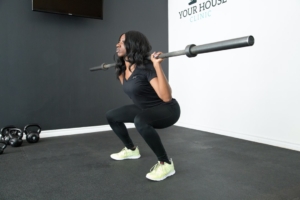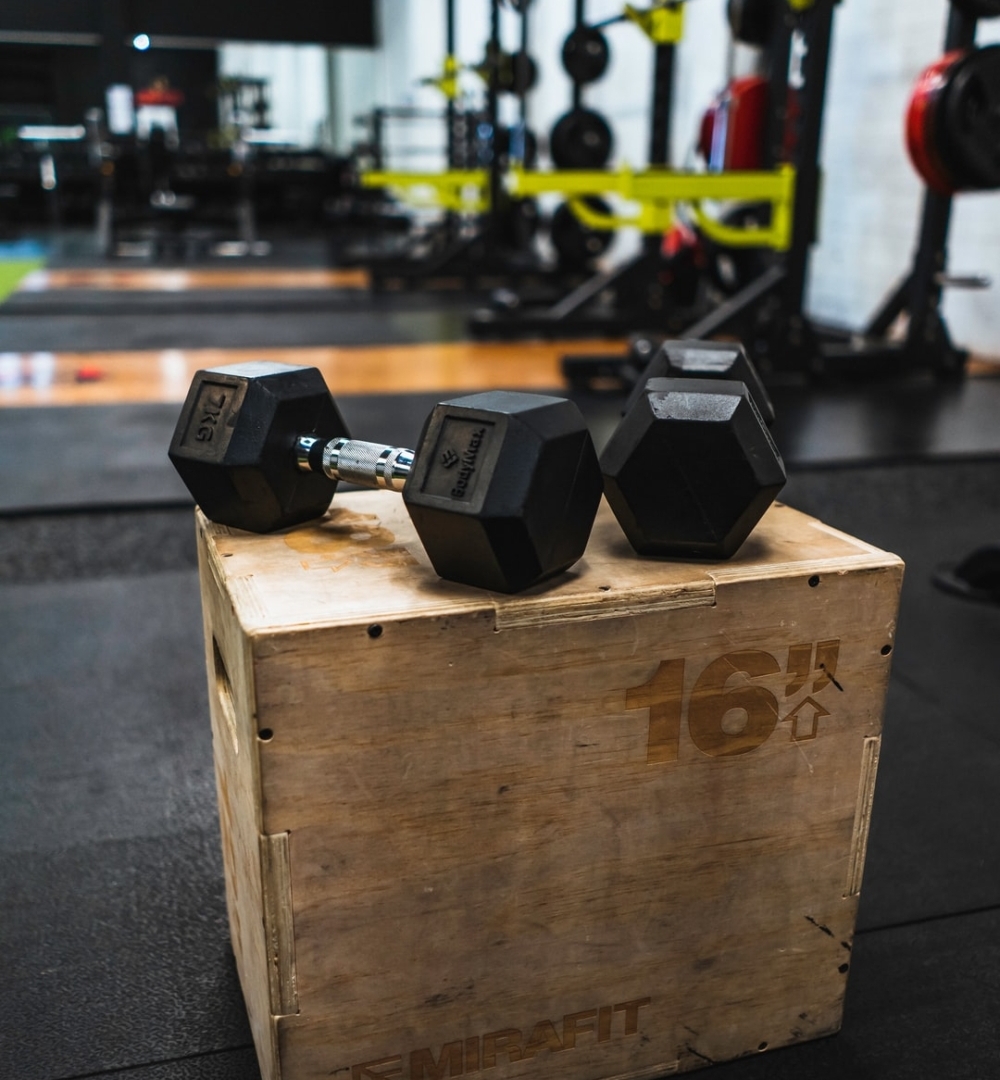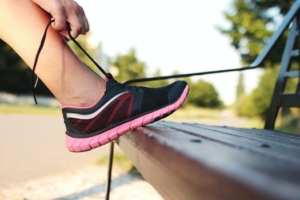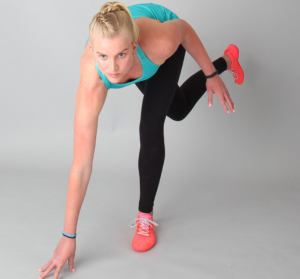Tag Archive for: downhill to downtown
Keep your training on track when you prevent tight hips
Oftentimes, runners experience a feeling of tightness in and around the hip region. Especially if they’ve just begun training and have started increasing their mileage. This tightness is generally a result of stiffness in the hip flexors and prevents runners from running their best. Hip flexors, particularly the iliopsoas, are important to runners. The iliopsoas acts as the strongest flexor of the hip and is the prime mover of hip flexion. Think of your hips as the wheels that propel you forward. Tight hips can lead to poor running form and an increased risk of injury. Here are a few things you need to know about tight hips.
What causes tight hips in runners?

Don’t let tight hips keep you from achieving your goals!
When running, your muscles are repeatedly used in the same way. As a result, runners can experience tight hips if they don’t stretch those muscles in the opposite direction.
Another reason is overcompensation due to weakness in other muscles like your core and glutes. When other muscles used during running are weak, others have to take over and work harder. This is why cross-training is important and helpful.
Lastly, your hips can tighten if you don’t allow them to rest and recover. As simple as it sounds, this is another reason why effective recovery is so vital to a training plan. There are many different ways runners allow their body to recover: yoga, foam rolling, deep stretching, massage, etc.
Signs and symptoms

Lower back pain could be an indicator that your hips are tight.
The most obvious sign is a feeling of tightness or stiffness in your hips. Other signs include pain in your lower back, neck, or glutes due to overcompensation or abnormal running form. Runners might also experience difficulty when stretching.
Prevention
As well as regular rest and recovery, there are also many exercises, stretches, and workouts that can help prevent tight hips. Don’t forget about foam rolling! Add the technique below to your foam rolling routine to keep your hips feeling loose and refreshed.
Foam rolling technique
- Get in a plank position (on your forearms)
- Place the roller under the front of one hip
- Roll up and down slowly, focusing on the tight spots
- Twist to the side so you include the outside of your hip
- Spend 1-2 minutes in the area, then switch legs
- Breathe deeply throughout
The two stretches below will help open up and strengthen your hips. Complete them before and after your run.
Skater squat
- Stand with your legs slightly wider than hip-width
- Squat down
- As you come up, slowly put your weight on the left leg
- Extend your right leg back
- Hold this for as long as you can, up to 60 seconds (place your hand on the ground for help balancing)
- Switch legs and repeat 10 times
Crescent lunge knee-up
- Lift your right knee up to 90 degrees
- Stretch your arms out to the side to help balance
- Bring your right knee towards your chest
- Switch legs and repeat 10 times
Training your body to run long distances isn’t all about mileage. Proper rest and recovery are just as important to any run or workout. So are stretching, cross-training, and foam rolling. Tight hips can alter your form and lead to discomfort and potentially injury. Add the two exercises mentioned to your routine to help prevent stiffness in your hips and keep working towards your goals.
Learn how to strengthen your glutes for a better runner’s butt
Runners should always keep their health and physique in proper condition. This is key to many, many happy miles! An effective training plan emphasizes a healthy diet, proper nutrition, and various runs. However, many runners are not aware of how much a better runner’s butt can help. Building strong glutes is an important aspect that helps avoid lower-body injuries and improve form. Learn about some cool tips for strengthening your glutes and start working towards a better runner’s butt. Pro tip: these glute exercises are a great addition to this effective warm-up routine.
The benefits of stronger glutes

Glute exercises can help improve your form. Credit: Scott Flathouse
The gluteal muscles play a key role in the movement and stability of your hips. Putting a focus on strengthening your glutes is a good practice during training. The top benefit of stronger glutes and a better runner’s butt, you are less prone to injuries. Other benefits include:
- improve body’s balance and stability
- can complete them anywhere
- increase in performance and endurance
- reduction in pain post-running.
Running itself isn’t enough to effectively strengthen the gluteal muscles. Take advantage of the benefits when you include these 4 glute-strengthening exercises. Whether you’re training or in the offseason, they’ll help you get a better runner’s butt. You might be sore after the first few times you use these exercises. That’s okay! Alleviate that sorenes and recover faster when you add Epsom salt baths to your recovery plan.
4 exercises to strengthen your glutes
-
Squats

You can complete squats with or without weights.
Squats are a common exercise that’s particularly helpful in strengthening the gluteus maximum muscle. You can use weights if you want, but they’re not necessary. For squats,
- keep your feet shoulder-width apart
- bend your knees until your upper legs are parallel with the ground
- push through your heals
- keep your chest up
- return to an upright position, then repeat
- to start, try 3 sets of 10 squats with a 60-second rest in between each set
-
Glute bridges

Hold the glute bridge for 1-2 seconds at the top.
These engage your glutes by isolating them with a unique posture. Be slow and deliberate with your movements. This is also great for your core! For glute bridges,
- lie flat on your back comfortably
- keep your legs at a 45-degree angle on a bench (or on the ground)
- lift your midsection straight up, clenching your glutes
- remain here for 1-2 seconds, slowly return to a resting position, repeat
- to start, try 3 sets of 15 glute bridges with a 60-second rest in between each set
-
Lunges

You can move forward or remain stationary during lunges.
Lunges strengthen the gluteal muscles on the front portion of the legs. These can be done by either standing in place or by walking forward. For lunges,
- put your hands on your hips or hold a small weight in each hand
- place one foot forward and the other backward in a staggered position
- in one motion, lunge forward with your front leg making a 90-degree angle and your back knee barely touching the ground
- if balance is an issue, you can place your hands on your knee
- return to an upright position by pressing into your heels, alternate legs, and repeat
- to start, try 3 sets of 10 lunges with a 60-second rest in between each set
-
Dumbbell step-up

Dumbbell step-ups are an excellent glute-strengthening exercise.
The dumbbell step-up is simple, yet very effective in strengthening your glutes. You will need dumbbells (or something heavy) and a box/bench/chair/curb to step on. For step-ups,
- stand in front of a raised surface in an upright position
- hold a dumbbell in each hand
- with your thigh parallel to the ground, step up onto the bench
- leave the other leg hanging
- slowly return to the initial position, alternate legs, and repeat
- to start, try 3 sets of 10 step-ups (5 for each leg) with a 60-second rest in between each set
Runners are always looking for different ways to improve their performance and reduce injury chances. Strengthening your glutes and creating a better runner’s butt is often an overlooked method of improvement. Incorporate 1 or all 4 of these exercises into your routine. It won’t take long before you begin to see and feel a difference. When you’re ready to jump to the next level, add these booty band workouts to keep strengthening your glutes.
Switch things up and see improvement when you vary your running routine
Everything can feel out of balance when you initially vary your running routine. Have you added new workouts? Are you getting up earlier than normal? Is your distance progressively increasing? Will you accrue some of your miles on a trail? All of these changes can impact your schedule and how your body feels after. This is much better than running the same route and distance every time. You’ll eventually adjust to your new routine and begin to see improvements! However you vary your running routine, don’t skip the warm-up.
How can you vary your running routine?

Switch up your running routine to see improvements.
There are many ways to add some spice and excitement to your routine. Below are 5 different ways you can change things up. You can mix and match several of them to work in concert with one another. Make sure you’re adjusting your routine to fit your schedule and your goals.
-
Frequency
Increase or decrease in the number of days you run. This will fluctuate depending on your goals, the number of rest days, and how often you cross-train (workout, swim, yoga, cycle, etc.).
-
Intensity

Adjust your intensity to coincide with the distance of your run.
Use your heart rate to change this variable. If you prefer to run for long distances at a steady pace, consider adding a workout with shorter distances with more intense efforts. If you normally run just a few miles at a fast pace, you’ll need to dial your effort back if you begin to increase your mileage. Do you want to take your kids with you on your run? Learn how to run with a stroller and know that you’ll have to adjust the intensity of your run.
-
Length
This is dependent on your goals and the training plan you’re following. If you’re running to stay healthy, perhaps you stay in the 10-20-mile range every week, but you adjust the intensity and change your routes. If you’re training for a half marathon, then you’ll need to increase your weekly mileage as you get closer to race day. Pro tip: as you’re increasing your mileage, this advice can help you prevent and cure shin splints.
-
Type

Include staircase runs and hill repeats to get stronger.
You can adjust how you run based on your smaller weekly goals that lead to your larger goal. If you want to get faster, include track workouts or interval training. Include hill repeats or staircase runs to strengthen your lower body and improve your breathing ability. These 7 different types of runs will help you switch things up.
-
Location
Don’t just run the same one or two routes all the time. Switch it up! If you run the same thing all the time, your body will become accustomed to that route. Whether you add hills to your route or take it to the trails, you’ll become stronger when you change your route. Add some track workouts to increase your speed.
How often should you vary your running routine?
The answer to this question depends on what you want from running. If you’re after general fitness, then consider changing it up every 4 to 6 weeks. If you’re planning to run a half marathon, then you’ll want to vary your running routine for the 3 to 4 months you’re training. Even small, weekly changes help because you’re giving your body a new set of challenges. They’ll help you reach your ultimate goal.
Whatever your goals are, you can become a better runner when you vary your running routine. Remember to change things up based on how they help you reach your goals. There might be some growing pains and slight changes to your schedule, but you’ll eventually settle in! Don’t forget to adjust your nutrition too. These 4 taco recipes are delicious and a great place to start!
Runners can complete these 6 beneficial exercises anytime, anywhere
More and more people are joining the running community. People are attracted by running’s simplicity and numerous health benefits. The best part is, you don’t need fancy equipment, weights, or elaborate training to get into the groove of running. All you need is a pair of shoes. Running is great, but you need to complement it with beneficial exercises that will help you get stronger and reduce the chance of injury. Check out our list of 6 beneficial exercises that will optimize your running workout and prevent injuries. You can do these exercises anywhere, anytime. Pro tip: complement all your exercising with a healthy diet. These 10 delicious recipes are ideal for busy runners.
6 beneficial exercises
-
Squats
 Squats strengthen your quads, glutes, hamstrings, and core. This will help your running form, especially if you recently started running.
Squats strengthen your quads, glutes, hamstrings, and core. This will help your running form, especially if you recently started running.
How to do them
Stand up straight and keep your feet shoulder-width apart. Slowly lower your body while bending your knees. You can use your arms to balance your body. Or you can place your hands behind your head and interlock your fingers. This will make your core work harder. Make sure that your chest is lifted and you’re looking up. Try to go as low as possible and then rise up slowly, while keeping your back straight the entire time. Place your feet side-by-side if you want to increase the level of difficulty.
-
Lunges
 Lunges are great for making your quads, hamstrings, and glutes stronger. They also help with flexibility and improving your range of motion which is important for long-distance running.
Lunges are great for making your quads, hamstrings, and glutes stronger. They also help with flexibility and improving your range of motion which is important for long-distance running.
How to do them
Stand straight and take a step forward with one leg while bending both knees. The knee of the leg that took the step should bend at a 90-degree angle and your other knee should barely touch or hover just above the ground. You can then push back up, take another step with the opposite leg, and complete the entire process. If you don’t have much space, just return to a standing position and repeat with the other leg.
-
Single-leg deadlifts
 One-legged deadlifts help with balance and strengthening your hamstrings and glutes. These are also great if you’re looking for a quick and effective pre-run warm-up.
One-legged deadlifts help with balance and strengthening your hamstrings and glutes. These are also great if you’re looking for a quick and effective pre-run warm-up.
How to do them
Stand straight keeping your body weight focused on one leg. Hold your core tight and lift one leg behind you, while pushing your upper body forward. Lower your body as far as you can, while keeping your back straight. Slowly return to a standing position and repeat with the other leg.
-
Pushups
 Pushups are great for working all upper body muscles and your core.
Pushups are great for working all upper body muscles and your core.
How to do them
Get down on all fours, while keeping your hands and toes wider than your shoulders. Move your legs back from this position so that your body weight is balanced on your hands and toes. Keep your back straight, hold your abs tight and engaged, and slowly lower yourself while bending your elbows. Push yourself back up, while straightening your elbows.
-
Planks
 Planks help strengthen your core.
Planks help strengthen your core.
How to do them
First, enter a pushup position. Focus on keeping your core tight while bending your elbows. Lower your body from this position so that your weight is balanced on your forearms and toes. Try to keep your back straight without sinking. Engage your abs and hold this position for as long as possible. For beginners, 30 seconds is a great start.
-
Burpees
 Burpees help increase endurance and build aerobic capacity. They will work out your entire body.
Burpees help increase endurance and build aerobic capacity. They will work out your entire body.
How to do them
Begin standing up, then squat and place your hands on the floor in front of you. From this position, kick your feet back to a pushup position. Keep your back straight, complete a pushup, and jump back into a squat by kicking your feet forward. Stand up straight and repeat the process.
As you get stronger and become more comfortable with these beneficial exercises, try to increase the difficulty level. You can do more reps, more sets, or increase the amount of time spent doing an exercise. By adding these exercises to your routine, you reduce the chance you experience runner burnout.
Latest Blogs:
NEWSLETTER
Thank you for signing up. You will be the first to know about new releases, giveaways & special projects. Stay tuned.

